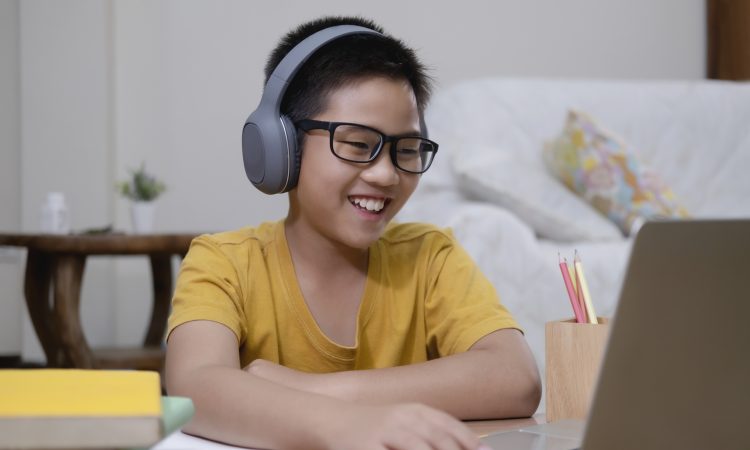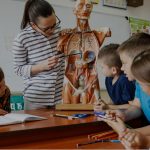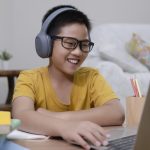The World of Work model was created by the Cajon Valley Union School District with guidance and support from teachers, business, education consultants and counselling professors and researchers. As Hartung et al. highlighted in their 2005 paper, “a sizable proportion of grade-school children are capable of employing their emerging understanding of interests and abilities to engage in both a cognitive and physical exploration of the world-of-work and to state career aspirations,” and the Cajon Valley model and research has revealed this reality. As teachers integrate the World of Work process starting in the early grades, students make natural connections between what they are learning and the world of work, and they begin to develop a vision of their future possible selves.
Some of the theorists and researchers who have greatly influenced the development of the World of Work initiative and helped to advance a common language of career include Dr. John Holland, Dr. Mark Savickas, Dr. Linda Gottfredson, Dr. Peter McIIveen, Dr. James Rounds, and Dr. David Blustein. Their work has deeply informed our practice and understanding of the evolving world of work.
In the video interview below, Ed Hidalgo, Chief Innovation and Engagement Officer for the Cajon Valley Union School District, speaks to CareerWise Editor Lindsay Purchase about his district’s unique approach to career education, experiential learning during a pandemic and more. Ed will be presenting at CERIC’s Virtual Cannexus21 conference on the topic of “Integrating Career Development in the Early Grades,” along with co-presenter David Miyashiro, Superintendent, Cajon Valley Union School District. Learn more about Cannexus, taking place Jan. 25 & 27 and Feb. 1 & 3, 2021, at cannexus.ceric.ca. Register by Nov. 12 to receive the Early Bird rate.
Video transcription follows.
Video transcription:
Lindsay Purchase, CERIC Lead, Content, Learning and Development: Hi, Ed! Thanks so much for joining me today to chat about student career development.
Ed Hidalgo, Chief Innovation and Engagement Officer at Cajon Valley Union School District: My pleasure, Lindsay. Thanks for having me.
Lindsay: So, you are the Chief Innovation and Engagement officer for a school district in California. Can you tell me about the work that you do and what makes your school’s approach to career development so unique?
Ed: Thank you very much for that question. It’s an honour to work here in the Cajon Valley Union School District. We’re a district of about 17,000 students, 28 schools. It’s currently a K-8 school district. We’ll be bringing on our first high school students next year.
I think there’s a couple elements that really have provided an opportunity to begin introducing career development in early grades here. And I think the first is the introduction of a blended and personalized learning model, where all of our students have their own Chromebooks – in fact, they have for eight years. Every child has their own Chromebook in the classroom and our teachers have learned to integrate blended and personalized learning, so this idea of small group instruction. A shift to a model where students really own their own learning – they have their own playlists on their computers. And they move in small groups and rotations based on their abilities and get very personalized instruction.
Lindsay: That’s amazing, to be able to bring that technology to every student. I know that in addition to that blended learning approach, another element of what you do is to work with parents and the workforce and community partners to bring career development to life for students. So how is that working now for you guys, during COVID?
Ed: When we moved to distance learning due to the pandemic, learning didn’t stop. Now what did need to shift is that the majority of our teachers were introducing career development into their classrooms using physical and digital materials in an in-person format. And so our designers, our ed learning specialist, shifted our digital learning materials into an e-learning playlist format, and we really leveraged Google technology. We’re a Google shop, an environment, and we use Google Classroom. So, we were able to create 13 weeks of digital, e-learning playlists that adapted our career development frameworks into a way that students and teachers could use them together remotely.
Lindsay: And so are you able to bring in any experiential learning components right now or are those a little more on hold?
Ed: Most definitely. One of the core elements of our framework is the idea of a meet a pro. There’s a four levels of integration process, where every student should explore careers, simulate careers, meet professionals and then practise. And we partner with a technology called Nepris that is allowing us to gain access to professionals remotely, digitally, using Zoom technology. And in fact, prior to COVID, we had achieved more than 100,000 student views of live industry chats with professionals. But we’re finding through the pandemic, businesses are even more excited to participate live and virtually. In some cases, we’re even able to advance more broadly into these social capital-building connections through these meet a pro’s, and using the technologies that teachers and students are already so familiar with because of the pandemic, in particular.
Lindsay: That’s really awesome, and I think it’s cool to see – obviously we have all these challenges right now, but there’s opportunities as well, and it seems like your district is able to capitalize on that a bit.
Ed: Absolutely, and I think the meet a pro is a perfect example. A second example is one of our schools over the summer – because we ran three two-week cohorts of summer enrichment for 6,000 students, in order to practise school essentially. And we invited teachers to come back to the classroom. Of course, they were paid for this. But we knew that we had to consider how we would do teaching and learning during the pandemic, once we get back to regular full-time learning. Well one of the cohorts launched an outdoor immersion program and it went like gangbusters. Our teachers were all integrated the Holland Framework and the RIASEC and doing quite a bit of self-discovery through this process. So, it’s showing us that there are so many new ways that we can help our students experience learning, even during this difficult time.
Lindsay: Speaking to the Holland Codes, which you mentioned, that’s a concept a lot of career professionals would be familiar with, but less so maybe teachers and parents – but maybe that’s not the case in your district. So how do you integrate that into the learning with the students?
Ed: It has been the greatest joy, and I only wish Dr. Holland was still with us so he could see, even some of the things he touched on in his writings about the framework and the theory. Because it is where we start in this district. Before we start integrating exposure to the world of work or careers, we begin with the adults and we begin with teachers first to discover their own interests along the lens of the RIASEC, where we ask them to self-report their themes and then take an empirically based assessment. And then soon after, if we can, we invite parents to come in and participate in the same experiences. Our hope from a self-awareness perspective is that we integrate ideas of understanding our talents, our interests and our workplace values, but we always ground in interests. And so once the adults have the language – and it’s new for teachers, just as you mentioned, they haven’t experienced this in their own practicums and their learnings – but once they begin to uncover the language and how to use it, our protocols and our processes, then they’re able to make these natural connections to what they’re teaching in the classroom. And that’s when this form of learning becomes so powerful. Because we’re truly helping students build this meta-cognitive understanding of who they are and who they want to become just through the lens of this just beautifully practical and simple application of Holland’s framework.
Lindsay: So, I imagine part of the success of your program would be able to build this evidence-based approach, so how do you evaluate success for such a large number of students engaging in these diverse activities?
Ed: We are working with the University of San Diego, and they’re studying middle schoolers, specifically in the areas of possible selves and in career decision-making self-efficacy. And what we noticed from our first year to second year research, that we now have 94% of students could identify a vivid, hoped-for, possible self over the first year. So that idea of using Holland, understanding self, understanding that connection to the world of work, using tools like the O*Net, and our teachers using this language, is driving modelling, physiological arousal and these elements from career decision-making self-efficacy that is helping to directly build students’ vision of their future possible selves. So, we have this beautiful research that’s evolving, but then if you come and visit our classrooms, you’ll see that kids are just using this language naturally. And so the combination of the two are really showing us that the work is advancing.
Lindsay: I’m wondering if during this kind of challenging time that we’re in right now, if you have a message for people about the value of career development or career exploration?
Ed: I think some of the listeners may not believe that this story is true, but this story is true. And it came from, during COVID, during our e-learning playlist time, probably April or May last year, I received a text message from one of our World of Work teachers, coaches, and she was sharing a text that she had received from a colleague of hers who actually is a therapist that supports some students in our district. Well, she had just sent this teacher a message after working with one of our students who had been struggling with distance learning and not being able to see her friends and be with students as normal. But what this counsellor had pulled out and teased out was that she was gushing – gushing! – about her RIASEC themes. And how knowing her interests, even while not in school, had allowed her to focus on activities outside of school that had filled her up, that had kept her motivated and focused and engaged, even during this difficult time. It was the RIASEC and understanding who she is that had given her peace even during this darkest time of distance learning.
So I think my message is, vocation psychology is an amazing gift that has been given to us and we should be so grateful to all the researchers who have worked so diligently. We have so many decades of research and we should not eliminate our youngest learners from the knowledge that we have gained and the tools that we have to help them through this period of time. Because knowing themselves and knowing where they fit in the world is something that can help them through this pandemic and through this crisis. And every child should know there’s a place in the world for them.
Lindsay: Couldn’t agree more. Well thank you so much, Ed, for taking the time to chat with me today and taking the time to share your expertise with all of our CareerWise viewers.
Ed: Well, Lindsay, it’s an honour, and I can’t thank you and CERIC enough for all the great work you do – the publishing, the amazing authorship and the speakers that you bring to us. Thank you for keeping us present in this work and for all your support.
Lindsay: It’s absolutely our pleasure. Take care, Ed.
Ed: Thank you, you too.





